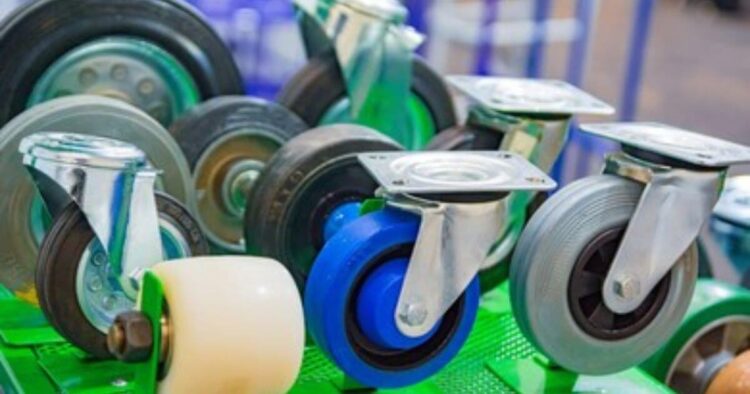Casters are an essential component in various industries, including healthcare, hospitality, and manufacturing. They allow for easy mobility of equipment, furniture, and other heavy objects. Over the years, caster technology has evolved to meet the changing needs of these industries. In this article, we will explore the advancements in caster technology and how they have improved efficiency and safety in the workplace.
The Introduction of Ball Bearings
One of the most significant advancements in caster technology was the introduction of ball bearings. Prior to this, casters used plain bearings, which required more force to move and were prone to wear and tear. Ball bearings, on the other hand, reduce friction and allow for smoother movement. This innovation greatly improved the efficiency of casters and made them more durable.
The Development of Swivel Locks
Another important development in caster technology was the introduction of swivel locks. Swivel locks allow users to lock the swivel of a caster in place, preventing it from rotating. This feature is especially useful when moving heavy objects or when precision is required. Swivel locks have greatly improved safety in the workplace by reducing the risk of accidents caused by uncontrolled movement.
The Use of Polyurethane Wheels
Polyurethane wheels are another innovation that has greatly improved caster technology. These wheels are made from a durable material that can withstand heavy loads and resist wear and tear. They also provide better traction than traditional rubber wheels, making them ideal for use on uneven surfaces. Polyurethane wheels have become increasingly popular in industries such as manufacturing and warehousing.
The Introduction of Shock Absorbing Casters
Shock absorbing casters are another innovation that has greatly improved safety in the workplace. These casters are designed to absorb shock and reduce vibration when moving heavy objects. This feature not only protects the object being moved but also reduces the risk of injury to workers. Shock absorbing casters are commonly used in the healthcare industry, where delicate equipment must be moved without causing damage.
The Development of Ergonomic Casters
Ergonomic casters are designed to reduce the strain on workers when moving heavy objects. These casters feature a larger wheel diameter and a wider tread, making them easier to maneuver. They also have a lower rolling resistance, which reduces the amount of force required to move heavy objects. Ergonomic casters have greatly improved worker safety and productivity in industries such as manufacturing and warehousing.
The Use of Stainless Steel Casters
Stainless steel casters are another innovation that has improved caster technology. These casters are made from a corrosion-resistant material that can withstand harsh environments. They are commonly used in the food and beverage industry, where cleanliness is essential. Stainless steel casters are also ideal for use in outdoor environments, where exposure to the elements can cause traditional casters to deteriorate.
The Introduction of Total Lock Casters
Total lock casters are designed to lock both the swivel and the wheel of a caster in place. This feature provides maximum stability when moving heavy objects or when precision is required. Total lock casters are commonly used in industries such as healthcare and manufacturing, where safety is a top priority.
The Development of Electrically Conductive Casters
Electrically conductive casters are designed to prevent static buildup, which can damage sensitive electronic equipment. These casters are commonly used in the electronics industry, where static electricity can cause significant damage to components. Electrically conductive casters have greatly improved efficiency and safety in this industry by reducing the risk of equipment failure.
The Use of Pneumatic Casters
Pneumatic casters are designed to provide a cushioned ride when moving heavy objects over rough terrain. These casters feature air-filled tires that absorb shock and reduce vibration. Pneumatic casters are commonly used in industries such as construction and landscaping, where heavy objects must be moved over uneven surfaces.
The Introduction of Autonomous Casters
Autonomous casters are the latest innovation in caster technology. These casters are equipped with sensors and software that allow them to move autonomously without the need for human intervention. Autonomous casters have the potential to greatly improve efficiency in industries such as warehousing and logistics, where repetitive tasks can be automated.
The Future of Caster Technology
As technology continues to advance, we can expect to see even more innovations in caster technology. From the development of new materials to the integration of artificial intelligence, the possibilities are endless. These advancements will not only improve efficiency and safety in the workplace but also reduce the strain on workers and improve overall productivity. The future of caster technology is bright, and we can’t wait to see what’s next.



